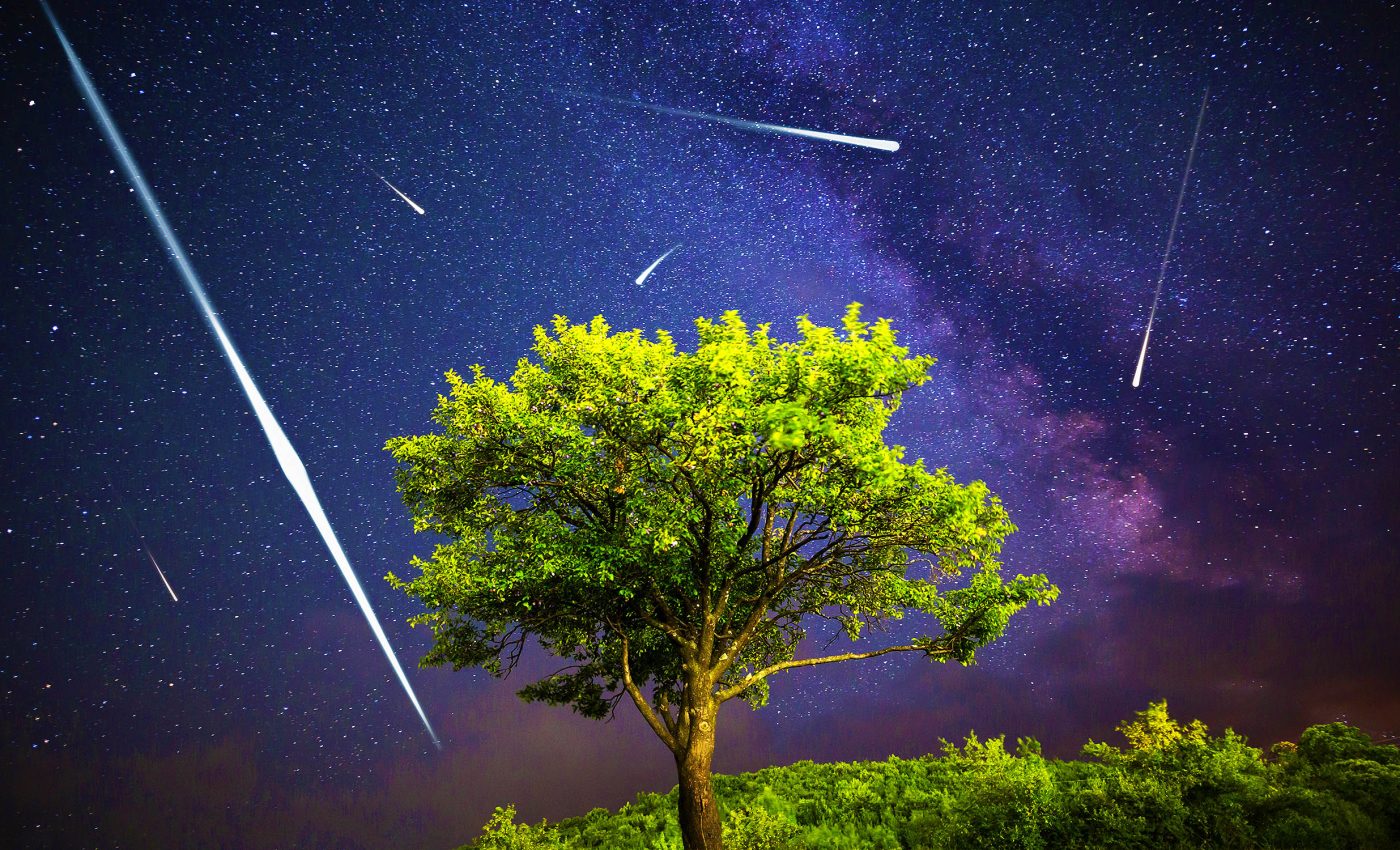
Perseid meteor shower peaks this weekend with a crescent moon and auroras
As the August night sky makes its grand entrance, what does the cosmos have in store for us, the star-gazing denizens of Earth? The answer is — a lot more than just a meteor shower.
Get comfy, and prepare for a celestial spree that weaves a wistful tale of planets glimmering and stars gleaming ceaselessly against the vast canvas of the night sky.
Imagine watching the twinkling constellations tell stories of ancient mythologies and the shimmering planets dance in their orbits, each one with its own unique charm.
The best part? It’s all going to unfold right above our heads, inviting us to gaze upwards and appreciate the beauty of the cosmos.
We’re diving headfirst into a month-long cosmic exploration, packed with awe-inspiring sights, fascinating facts, and the thrill of discovering the mysteries of the universe that have intrigued humanity for centuries.
Starting the night sky show (August 5-11)
If you’re tired of predictable evening television, here’s a week to switch channels to the celestial sphere instead.
As the sun dips below the horizon on Monday, August 5, direct your gazes towards the northwest. There, a crescent moon in its blush, barely lit at 2%, keeps a coy proximity to Venus.
As the universe weaves this dreamy tableau, a closer inspection might bring forth Leo’s omnipresent brilliance, Regulus.
Let’s not miss a faint blush of red in the form of Mercury. You should grab a pair of binoculars if you have them. You wouldn’t want to miss this bewitching sight.
What to expect?
As the days roll on, every night promises a fresh cosmic spectacle that captivates stargazers and casual observers alike.
One such marvel is the elusive phenomenon known as “Earthshine,” where the moon’s darker side is gently illuminated by sunlight reflecting off the Earth’s oceans, creating a soft, glowing effect that enchants those who take the time to look up.
This subtle light contrasts beautifully with the continued brilliance of the moon, which waxes and wanes in its phases, and the bright planet Venus, both of which appear to pirouette gracefully across the vast night sky.
These celestial dancers not only highlight the beauty of our universe but also remind us of our place within it, sparking curiosity and wonder in the hearts of those who observe their nightly performance.
Peak of the Perseids
That’s not all. This weekend is the pièce de résistance with the awe-inspiring Perseid meteor shower set to peak on Sunday, August 11.
With an astounding 60 meteors per hour sweeping across the sky, it’s a sight for sore eyes. And, the Northern Lights might just make a surprise appearance!
“The Perseid meteor shower, which peaks in mid-August, is considered the best meteor shower of the year. With swift and bright meteors, Perseids frequently leave long ‘wakes’ of light and color behind them as they streak through Earth’s atmosphere,” notes NASA.
Solar activity and auroras
This weekend, we’re in for a captivating display from the cosmos. Earth is expected to experience strong solar storms that could bring stunning auroras to regions much farther south than usual in the U.S.
The NOAA’s Space Weather Prediction Center (SWPC) has issued alerts for significant geomagnetic storms forecasted between August 9 and August 11, as a coronal mass ejection slams into Earth’s magnetic field.
These geomagnetic storms might cause disruptions in our technology, possibly leading to radio blackouts and power grid issues, especially in northern areas.
When stars align (August 12-18)
Still reeling from the Perseids‘ spectacle, the second week keeps the momentum going. Get ready to navigate through an enthralling maze of constellations.
Chase Hercules, home to the Great Globular Cluster, M13, a beguiling gathering of ancient stars. Look out for Vega, shining with unadulterated brilliance in Lyra.
By the week’s conclusion, prepare to spot the distinctive orange glow of Arcturus in Boötes, one of the brightest stars to grace our night sky.
Celestial ballet at night (August 19-25)
Now, we shift gears from cosmic fireflies to the moon and its celestial neighbors. The third week of August kicks off with Saturn in the limelight as it reaches opposition.
Plan a night out with the ringed planet, clearly visible in all its glory.
Later in the week, do keep an eye out for a celestial waltz between Jupiter and the moon. A perfect excuse, wouldn’t you say, to spend a night under the stars.
Not to be left out, the Milky Way ascends majestically, presenting an unfiltered spectacle of our home galaxy.
Final cosmic act (August 26 – September 1)
As we bid adieu to August and welcome September, the celestial drama reaches its grand finale. From a radiant full moon to a special cameo by Mars in close proximity to our lunar companion, every night promises to be a celestial marvel. The Summer Triangle makes a resounding appearance too.
So, this is your cue to grab a star chart, or that astronomy app you’ve been meaning to try out. Prepare to traverse the night sky on a cosmic odyssey!
Remember, each night brings with it a new surprise and a reason for us to keep looking up.
The staggering wonders of the cosmos are truly appreciated when we peel ourselves away from the hustle and bustle of our daily lives.
So, this August, make it a point to admire the night sky. After all, there are always magical secrets of the universe waiting just above you!
—–
Like what you read? Subscribe to our newsletter for engaging articles, exclusive content, and the latest updates.
Check us out on EarthSnap, a free app brought to you by Eric Ralls and Earth.com.
—–













